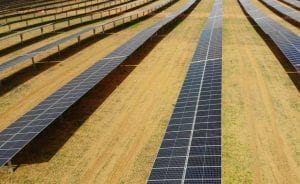Chevron Australia will be forced to account for almost all of the greenhouse gas emissions produced by the mammoth Gorgon gas project to date, following a WA government ruling that could see the company hit with a $100 million plus bill for carbon offsets.
The WA state government has agreed to a recommendation of the state’s Environmental Protection Authority that Chevron be responsible for capturing, or offsetting, 80 per cent of the carbon dioxide emissions extracted from the Gorgon reservoir dating back to 2016.
The gas extracted from the Gorgon reservoir primarily contains natural gas, but also contains a significant component of carbon dioxide. Chevron separates the two greenhouse gases, but as condition of its environmental approval, Chevron is required to capture and store the separated carbon dioxide, rather than allowing it to vent into the atmosphere.
Chevron has established a carbon capture and storage project to store the excess carbon dioxide on site, injecting the gas underground, as part of the $55 billion Gorgon project, but the commissioning of this part of the project has faced substantial delays.
The carbon capture facility was supposed to commence operation in 2016, but this was delayed for several years due to commissioning difficulties, and eventually commenced the injection of carbon dioxide underground for the first time in 2019. The delay meant that millions of tonnes of carbon dioxide emissions were released from the project, that should have been captured and stored at the facility.
“Chevron, and its partners Shell and ExxonMobil, failed to bury emissions from the Gorgon site for years after it started operating in 2016, and the impact in 2017-18 was huge resulting in over half of Australia’s increase in annual emissions,” the Australia Institute’s climate and energy director Richie Merzian said.
“Chevron is still in emission-reduction debt for the last three years of carbon pollution. This carbon debt is greater than the annual fossil fuel emissions of 12 Pacific Island countries.”
“Carbon capture and storage has been a long-running marketing tool to try to bury the fossil fuel industry’s dirty reputation. CCS should only be used in sectors where there are no other alternatives available and that doesn’t extend to energy generation or fossil fuel extraction.”
With the CCS project expected to capture as much a 4 million tonnes of equivalent emissions each year, Chevron may only have the capability to capture around half of the emissions that must be stored across its first five years of operation, with emissions offsets set to be necessary to account for the remaining emissions.
If the carbon capture and storage facility is unable to operate at its full capacity, millions more tonnes of excess carbon dioxide emissions could end up being released by the project over the next couple of years. Chevron will have to account for its excess emissions over a five-year rolling period, so will be due to show how it has managed its emissions to the WA government in 2021.
It could lead to a significant carbon bill for Chevron, with the total cost of offsetting the excess emissions from the Chevron project through to 2021 feasibly exceeding $100 million. But given Chevron’s Australian operations recorded a $8.4 billion profit last year, it is probably going to make little dent to the company’s ongoing earnings.
Chevron had sought a waiver from the WA government that the emissions offset requirement only commence from 2018, when the second stage of an expansion of the Gorgon project was completed.
But in adopting the recommendation of the WA Environmental Protection Authority, environment minister Stephen Dawson ruled that it must account for emissions going back to 2016, when the first stage of the Gorgon project expansion was completed, and when carbon dioxide first started being vented from the project.
It is these excess emissions that the Western Australian government now wants Chevron to account for, with environment minister Dawson ruling last week that it would not waive the requirement for the emissions to be captured.
Chevron’s Gorgon project is Australia’s highest greenhouse gas emitting gas project, releasing almost 9 million tonnes of CO2 equivalent greenhouse gas emissions in the 2018-19 financial year, which includes both escaped methane from extraction and processing, as well as the excess carbon dioxide before the carbon capture and storage project was able to come online.
The Federal government contributed $60 million towards the cost of Chevron’s Carbon Dioxide Injection Project at the Gorgon project, under the Low Emissions Technology Demonstration Fund and is expected to reduce emissions at the facility by 100 million tonnes over the project’s life.
It is the only large-scale carbon capture and storage project in operation in Australia.
RenewEconomy and its sister sites One Step Off The Grid and The Driven will continue to publish throughout the Covid-19 crisis, posting good news about technology and project development, and holding government, regulators and business to account. But as the conference market evaporates, and some advertisers pull in their budgets, readers can help by making a voluntary donation here to help ensure we can continue to offer the service free of charge and to as wide an audience as possible. Thank you for your support.







